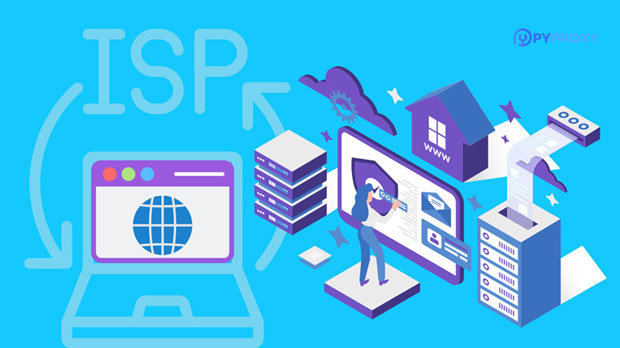How do I make sure that the Socks5 proxy doesn't cause DNS leaks?
When using a socks5 proxy, one of the primary concerns is the potential for DNS (Domain Name System) leaks. A DNS leak occurs when your computer sends DNS queries through an unsecured or default DNS server, exposing the websites you visit to third parties, even though you're using a proxy to mask your IP address. This can defeat the purpose of using a proxy for privacy and security. To prevent DNS leaks while using SOCKS5, several strategies can be employed, including configuring the system to force DNS queries through the proxy, using secure DNS servers, and utilizing specialized software tools that block potential leaks. In this article, we will explore various techniques to ensure that your SOCKS5 proxy connection does not inadvertently expose your DNS queries and compromise your privacy. What is a SOCKS5 Proxy and How Does it Work?Before diving into how to prevent DNS leaks, it’s important to understand what a SOCKS5 proxy is and how it functions. SOCKS5 (Socket Secure version 5) is an internet protocol that routes network traffic between a client and a server through a proxy server. Unlike HTTP proxies, which only handle web traffic, socks5 proxies can handle any type of internet traffic, including torrents, FTP, and other protocols.When using SOCKS5, your IP address is hidden from websites, as the proxy server is acting as an intermediary. However, while SOCKS5 hides your IP, it does not encrypt your traffic, meaning that DNS queries and other data may still be vulnerable to leakage if not properly configured.What is a DNS Leak?A DNS leak occurs when your system sends DNS requests outside the proxy tunnel, exposing your real IP address and online activity. This is particularly problematic when trying to maintain anonymity or avoid surveillance. When connected to a SOCKS5 proxy, the expectation is that all traffic, including DNS queries, will be routed through the proxy. However, many operating systems or applications might bypass the proxy for DNS requests, sending them directly to your default DNS resolver, typically provided by your Internet Service Provider (ISP).This leakage can defeat the purpose of using a SOCKS5 proxy, as your ISP, or any third-party monitoring entity, can still track the websites you're accessing.Steps to Prevent DNS Leaks with SOCKS5 ProxyTo ensure that your SOCKS5 proxy does not result in a DNS leak, follow these best practices:1. Use DNS Servers that Support EncryptionOne of the best ways to ensure DNS queries do not leak is to configure your system to use DNS servers that support encryption, such as DNS over HTTPS (DoH) or DNS over TLS (DoT). These protocols encrypt DNS queries, making it more difficult for anyone to intercept or monitor your DNS traffic, even if a leak occurs.By using encrypted DNS servers, even if the DNS query is routed outside the proxy, it will be protected from interception, providing an extra layer of security and anonymity.2. Modify System DNS SettingsAnother method is to manually configure your DNS settings on your operating system. By specifying a DNS server that you trust, and making sure it is set up to work with your SOCKS5 proxy, you can ensure that all DNS requests go through the proxy tunnel.On Windows or Linux systems, you can go into the network settings and manually input DNS servers that are known to work with SOCKS5 proxies. This way, even if the proxy server fails or there is some misconfiguration, your DNS requests will still be routed through your chosen secure DNS server.3. Use Applications with Built-in DNS Leak ProtectionSome applications have built-in DNS leak protection, especially those designed for privacy-conscious users, like torrent clients or web browsers. These applications are capable of forcing all DNS queries to pass through the SOCKS5 proxy, ensuring that no DNS queries are sent outside the proxy tunnel.If you are using a specific application for browsing or torrenting, check its settings to see if it offers DNS leak protection. For example, some torrent clients automatically configure the DNS to route through the proxy when you enable SOCKS5, providing an additional safeguard against leaks.4. Use a VPN with SOCKS5Another practical approach to prevent DNS leaks is to combine a VPN with your SOCKS5 proxy. A VPN can help encrypt all your traffic, including DNS queries, and it can also prevent DNS leaks by forcing DNS requests to go through the encrypted tunnel. By using both a VPN and a SOCKS5 proxy, you create a layered security system that minimizes the chances of any leak occurring.When configuring a VPN with SOCKS5, ensure that the VPN provider does not have a DNS leak, and it is configured to handle DNS queries securely. This dual-layered approach makes it far more difficult for any information to escape the encrypted tunnel.5. Test for DNS LeaksEven after configuring your system to prevent DNS leaks, it is important to regularly test for any leaks. Several online tools can check whether your DNS queries are leaking outside the proxy tunnel. Simply connect to your SOCKS5 proxy and run a DNS leak test to see if any requests are being sent to your ISP’s DNS server.Testing should be done periodically, especially after making changes to your system or proxy settings, to ensure that your DNS queries are being securely routed through the proxy and encrypted as needed.6. Keep Your Software UpdatedAnother simple yet effective measure to prevent DNS leaks is to keep your software up to date. Operating systems, proxy software, and VPN clients are regularly updated to patch vulnerabilities and improve performance. Outdated software can sometimes have flaws that expose your DNS queries or fail to route traffic securely through the SOCKS5 proxy.Always install the latest updates and patches for your operating system, networking software, and any related applications to ensure that you’re protected from potential DNS leaks.7. Use Specialized DNS Leak Protection SoftwareIf you want an extra layer of protection, there are specialized DNS leak protection tools available. These tools automatically block any DNS queries that try to bypass the proxy, ensuring that all DNS traffic is handled securely. Some of these tools are open-source and can be customized to meet specific needs.These tools can be especially useful if you need to configure complex network settings or want to add an additional safety net to prevent DNS leaks.ConclusionEnsuring that your SOCKS5 proxy does not cause DNS leaks is crucial for maintaining privacy and security online. By following best practices such as using encrypted DNS servers, configuring system DNS settings, using applications with DNS leak protection, combining a VPN with SOCKS5, regularly testing for leaks, and keeping your software updated, you can significantly reduce the risk of DNS leaks. Furthermore, using specialized DNS leak protection tools can offer an extra layer of security. With these strategies in place, you can enjoy the full benefits of SOCKS5 proxies without compromising your privacy or anonymity.
2025-01-14

























































